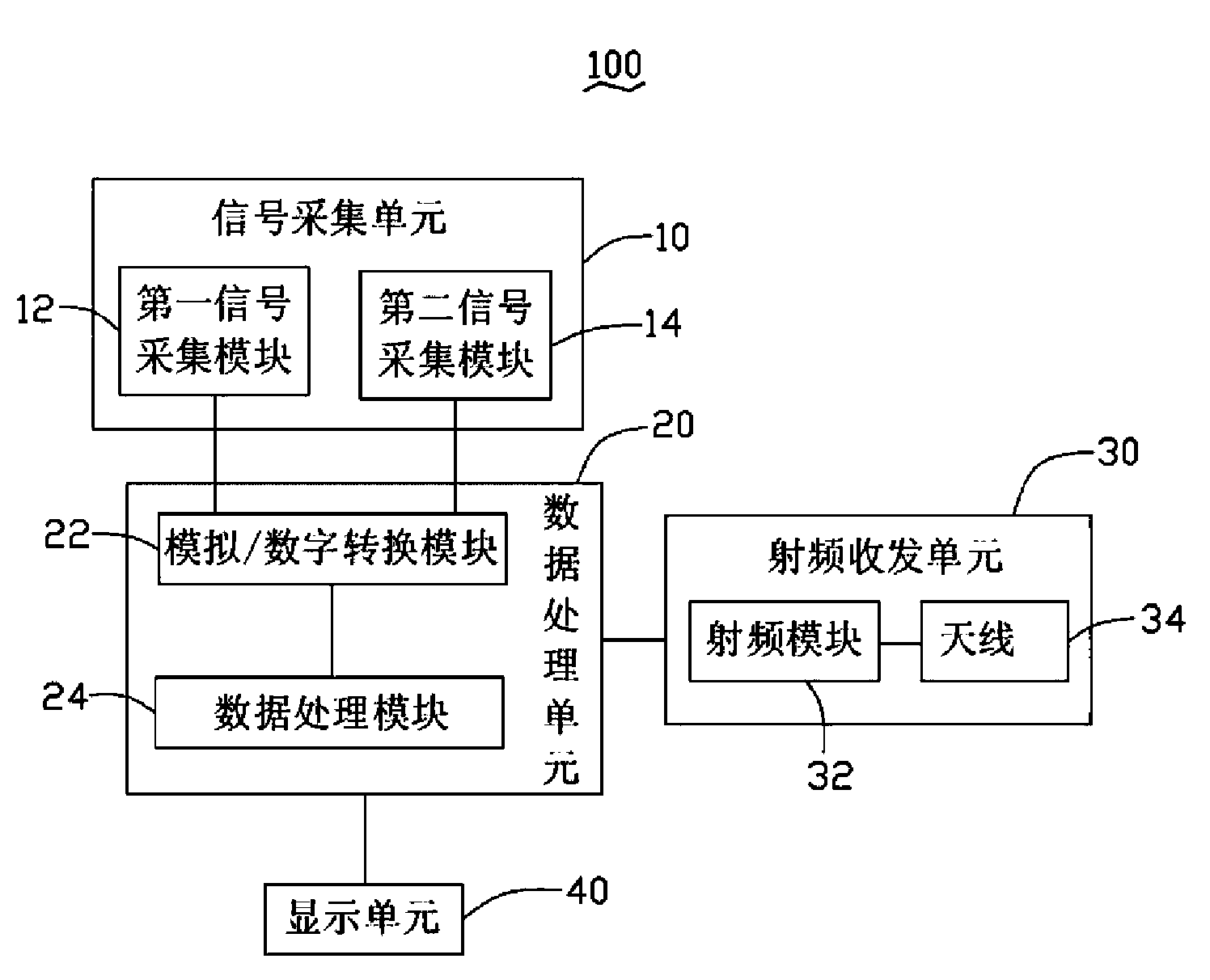Wireless communication device with lie detection function and lie detection method thereof
A wireless communication device, the technology of both parties, applied in the direction of telephone communication, psychological devices, electrical components, etc., can solve the problems of difficult to carry and use, large volume, complex structure of lie detector, etc., and achieve the effect of preventing fraud
- Summary
- Abstract
- Description
- Claims
- Application Information
AI Technical Summary
Problems solved by technology
Method used
Image
Examples
Embodiment Construction
[0013] see figure 1 , the present invention discloses a wireless communication device 100, which, in addition to general communication functions, can also test the probability of lying between the communicating parties by collecting and processing human physiological data and voice information during communication. The wireless communication device 100 includes a signal acquisition unit 10, a data processing unit 20, a radio frequency transceiver unit 30 and a display unit 40, and the data processing unit 20 is electrically equal to the signal acquisition unit 10, the radio frequency transceiver unit 30 and the display unit 40. connect.
[0014] The signal acquisition unit 10 includes a first signal acquisition module 12 and a second signal acquisition module 14 .
[0015] The first signal acquisition module 12 is a general omnidirectional microphone. In this embodiment, the first signal acquisition module 12 can be used to collect voice information when both communication pa...
PUM
 Login to View More
Login to View More Abstract
Description
Claims
Application Information
 Login to View More
Login to View More - R&D
- Intellectual Property
- Life Sciences
- Materials
- Tech Scout
- Unparalleled Data Quality
- Higher Quality Content
- 60% Fewer Hallucinations
Browse by: Latest US Patents, China's latest patents, Technical Efficacy Thesaurus, Application Domain, Technology Topic, Popular Technical Reports.
© 2025 PatSnap. All rights reserved.Legal|Privacy policy|Modern Slavery Act Transparency Statement|Sitemap|About US| Contact US: help@patsnap.com



